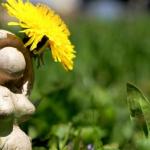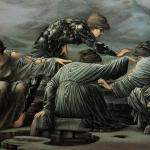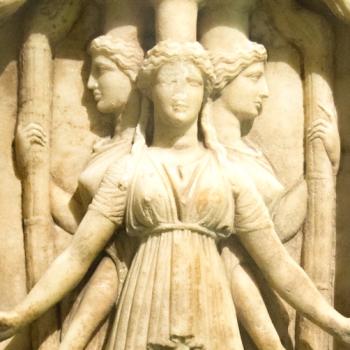What Is It? Ostara is a sabbat celebrating the Spring or Vernal Equinox. Modern Witches have been celebrating it since at least the 1950’s, and possibly even earlier. Depending on where you live and how you interpret the Wheel of the year, Ostara is either the first or second sabbat celebrating Spring. Ostara can be celebrated on the equinox proper (usually around the 20 of March) or simply when a Witch has the time for it. Ostara is one of the “lesser sabbats,” a phrase used to describe the sabbats that occur on the equinoxes and solstices.
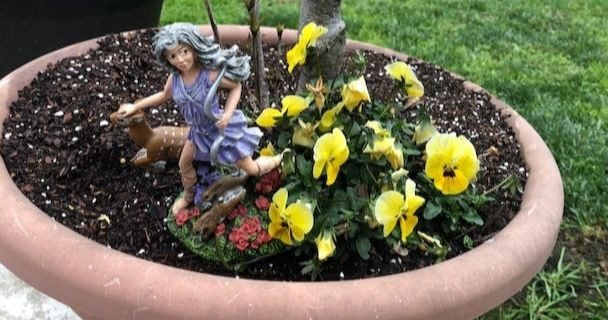
Did Ancient Pagans Celebrate Ostara? Surprisingly, they did not. Ostara is a modern holiday, not an ancient one. There are some holidays celebrated on the Spring Equinox, including the Iranian New Year, called Nooroz or Nowruz. In Japan the holiday of Shunbun (春分) is celebrated on the equinox and serves as a time to remember the dead, pray to the spirits of the land, and celebrate the rebirth of the Earth.
Where does the name Ostara come from?: The Spring Equinox was given the name Ostara by American-born Witch and poet Aidan Kelly. While putting together a Witchcraft calendar in 1974 Kelly decided to gift the equinoxes and solstices with more poetic names than “Spring Equinox” and “Summer Solstice.” For the Spring Equinox he chose the word Ostara, which comes to us from the British historian Bede.
According to Bede (673-735 CE) the word “Easter” comes from a goddess named Eostre, whose name was given to an entire month “Eostur-month,” and then eventually to one specific holiday occurring in that month, the one we now call Easter. Eostre is mostly absent from the historical record, but it seems unlikely that Bede would have made up a goddess out of whole cloth. Bede mentions that by the time he was writing about her, her worship had already ceased. More recently linguist Philip Shaw has argued that Eostre was most likely a Germanic Matron Goddess worshipped by Anglo-Saxons in present day county Kent.
A goddess named Ostara also shows up in the writings of folklorist Jacob Grimm. Grimm speculated that there was a goddess named Ostara and that the Christian holiday of Easter was named after her. Grimm also gathered up all the elements he thought were “pagan” and matched them to his goddess. Modern interpretations of the goddess Eostre generally follow the template established by Grimm. Though there’s no concrete proof pointing towards a historical Ostara as articulated by Grimm, it’s not completely out of the question.
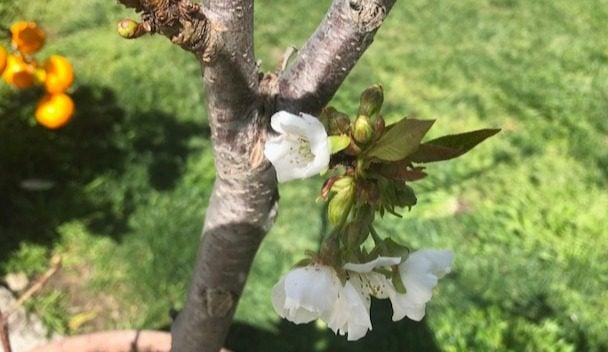
Are Easter and Ostara the Same Thing?: No, they are not the same thing. Easter is a Christian Holiday and is celebrated on the first full moon after the equinox. This tradition was adapted from the Jewish tradition of celebrating Passover in accordance with the Hebrew lunar calendar. It’s also worth pointing out that Easter is only called Easter in English (in German it’s Ostern which is pretty close!), in most places it goes by a variant of the Greek word Pascha, meaning Passover. Easter may be named after the goddess Eostre, but it was celebrated long before the name Easter was adopted in English.
Are Any of the Traditions Associated with Easter Pagan?: Maybe? Probably? Possibly? Bunnies have nothing to do with Jesus, and neither do eggs. Eggs have been used by Christians and ancient pagans for a variety of things and have all sorts of symbolic connotations. Rabbits are a part of the natural worlds and like to have sex, that’s pretty Pagan to me, no matter when the tradition of the first Easter Bunny was adopted. No one really knows how those things came to be assosciated with Easter, they might be a genuine pagan survival, or something of a more recent vintage. We’ll probably never know for sure.
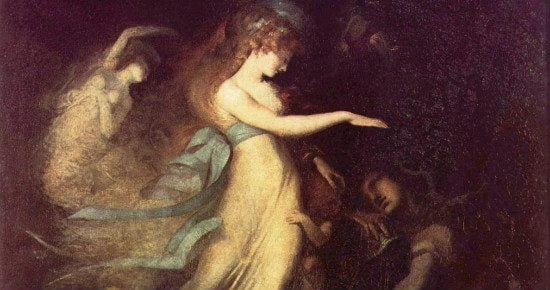
What Are the Best Ways to Celebrate Ostara? I think the sabbats should represent what is going on in your back yard. Are trees budding and flowers blooming? Then celebrate that. Is it snowy and cold? They build your ritual around the promise of warmer days or go out and have a snowball fight. There are no right or wrong ways to celebrate.
In my coven we use many of the traditional trappings of Easter for our celebrations. We bake hotcross buns, do stuff with eggs, and celebrate just how green the Earth is this time of year. (The latter is because we currently live in California. In Michigan we used to celebrate Ostara as “the last snow of the year,” which sometimes it was, more often, it wasn’t).
I always find Ostara to be a great time to let my out my inner child, and associate the holiday with new beginnings, spring planting, and personal growth. Since it’s not quite Spring in her full glory yet, it’s also a time of preparation. In keeping with the idea of “Spring cleaning,” Ostara is also a great time to throw out anything that’s not working in your life and find a replacement for it.
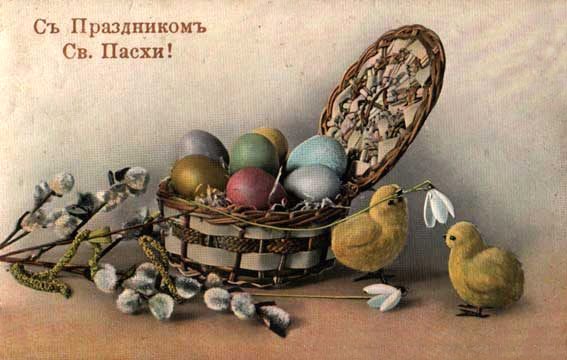
Is There Any Mythology Specifically Associated with Ostara? Many Witches celebrate the first meeting of their deities around this time of year. In the cosmology my wife and I generally use, we celebrate the first meeting of the Maiden Fair and her future lover the Goat Boy on Ostara. I also like to speculate on the first meetings of the Maidens Fair and the Goat Boys.
The classic myth of Demeter and Persephone also works well on Ostara, as does the lesser known myth of Aphrodite, Persephone, and Adonis. If a myth makes sense to you this time of year it’s fair game.
Ishtar is Not Related to Ostara or Easter A meme makes its way through the world this time of year erroneously equating the goddess Ishtar with both Easter and Ostara, it’s not true, so please don’t share it.


